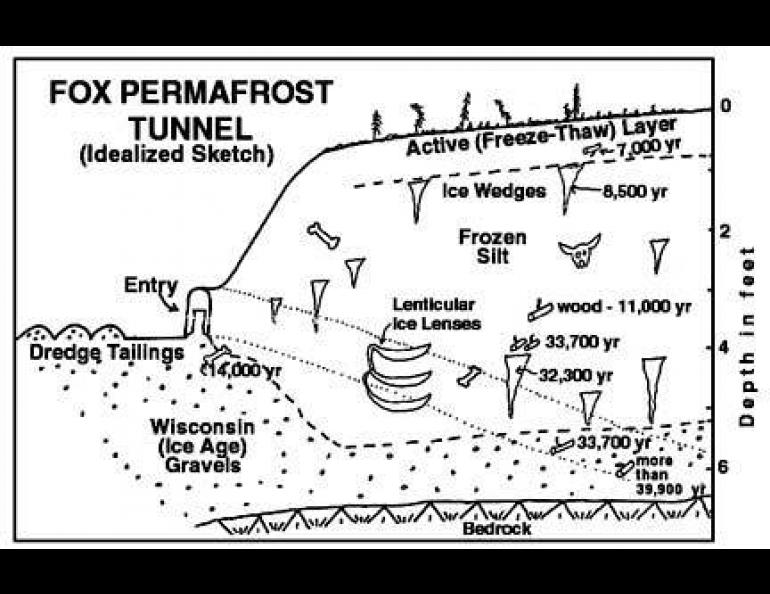
Fox Permafrost Tunnel
Sloping gradually down into a frozen hillside near Fox, the CRREL (Cold Regions Research and Engineering Laboratory) permafrost tunnel provides a fascinating portal into the past. Originally dug by the U. S. Army to test methods of tunneling in frozen silts and gravels, the tunnel penetrates through a 40,000 year old accumulation of soil, gravel, ice, wood and bones. Enough organic material is distributed in the material to enable radiocarbon dating of many of the objects seen in the tunnel wall.
Down at the bottom are the gold-bearing gravels, laid down perhaps as long as 100,000 years ago. Above the gravels are layers of debris-laden mucks composed mainly of fine-grained windblown soil (loess). Downslope creep over the years has mixed up this material. Pieces of trees and ancient bones show in the tunnel walls; some are tagged with signs showing their ages.
Spectacular ice wedges are cross sectioned by the tunnel as are lenticular lenses of pure ice, stacked one atop the other. How these lenses form is evidently a mystery, but it is known that water migrates through the muck when it is near the freezing point and somehow accumulates to form the ice bodies.
Those lucky enough to have the University's Dr. Earl Beistline guide them on a tour through the Fox tunnel receive a valuable short course in the recent past. In the dim lamplight one can almost see the old miners of 70 years ago picking away in their hand driven tunnels much like this one. And the -5 degree C temperature almost carries one back to the ice ages when the now entombed bones jutting out of the wall were parts of living animals ranging over the Tanana Valley .





